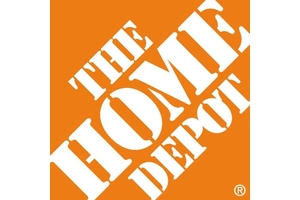Home Depot continues to strengthen its presence in the pro customer segment, with pro sales once again outpacing DIY sales growth in the fiscal fourth quarter. Pro sales accelerated in the quarter relative to the third quarter and show strong double-digit growth on a two-year basis, according to the home-improvement retailer.
Home Depot said all merchandise departments posted positive comps during the fourth quarter, including above-average comps in plumbing, electrical, building materials, millwork, decor, and storage and paint. The average comp ticket increased 12.3% in the fourth quarter due to inflation across several product categories, while comp transactions decreased 3.8%. Big-ticket comp transactions—transactions over $1,000—were up approximately 18% compared to the fourth quarter of 2020, according to president and COO Ted Decker.
Recently, Home Depot began investing in stores to enhance the interconnected shopping experience for customers and remove “friction” wherever possible. In the third quarter, Decker highlighted that efforts directly led to sales per square foot improvement, on-shelf availability improvement, and labor utilization improvement.
“As we build [a] frictionless ecosystem, we think that is disruptive because our aim is to build the next level of frictionless experience and then perhaps more disruptive is our pursuit of the pro planned purchase,” Decker said on the company’s quarterly earnings call. “We always use the term that pros use us as a 7-Eleven. Certainly, we have more share of wallet with smaller pros. But the opportunity with larger pros, to build their confidence that The Home Depot is going to be there for them with a sales representative, appropriate pricing, reliable delivery, breadth, and depth of inventory, that is the real disruption.”
To highlight how investments have directly contributed to success and customer satisfaction, Decker shared a case study of a Dallas pro customer on the earnings call. Initially, the remodeler primarily shopped at Home Depot for “unplanned immediate need purchases,” but took advantage of the increased pro offerings from Home Depot: the company signed a dedicate Pro Account Representative, downloaded the Home Depot mobile app, joined the Home Depot pro loyalty program and authenticated with the retailer through its B2B website. Through the years, the customer’s net spend at the store grew to well over $300,000 annually, according to Decker.
“While this is one example, we see that customers increase spend with us as they build confidence in our capabilities,” Decker said. “We believe the ability to serve our pros’ planned and unplanned purchase occasions will be an important driver of growth as we work toward a $200 billion sales milestone.”
One Supply Chain
Home Depot chairman and CEO Craig Menear shared an update on the retailer’s One Supply Chain rollout, stating that while many of the 150 new planned facilities will be completed by the end of 2022, some will take longer due to constraints related to COVID-19 and the company’s recent acquisition of HD Supply.
“In terms of our market delivery operations, we expect to have approximately 85 of the 100 that we plan fully operational by year-end,” Menear said. “In terms of our market delivery centers, we have a handful open today, but I expect those will take a bit more time to roll out given the acquisition of HD Supply, which required a brief pause in order to determine how legacy HD Supply assets would factor into our broader supply chain plans.”
Menear said the acquisition of HD Supply led to a company rethink on the scope of market delivery center facilities (MDC), which were originally intended to carry most delivered store SKUs as well as maintenance repair operations (MRO) SKUs. Instead, the company plans to leverage the legacy HD Supply network for MRO fulfillment to free up MDCs for local, direct fulfillments for store-based SKUs.
“I think it’s noteworthy to think that while there were some delays and some great opportunities we took after the acquisition of HD Supply to further optimize what these assets could mean to our end markets, we still grew by $40 billion over two years,” executive vice president and CFO Richard McPhail said on the call. “And so while we’re really sort of early in the days of One Supply Chain, it’s one part of an ecosystem that has created tremendous market share capture and top-line growth.”
Quarterly and Fiscal Year Results
Fourth quarter sales increased by $3.5 billion on a year-over-year basis to $35.7 billion, while comparable sales in the U.S. increased 7.6% in the fourth quarter. For the full 2021 fiscal year, sales increased $19.0 billion from 2020 to $151.2 billion in 2021. Comparable sales increased 10.7% in the U.S. for the full fiscal year.
Home Depot reported sales leveraging digital platforms increased 6% from the fourth quarter of 2020 and increased over 100% on a two-year basis. The retailer also reported that for the full 2021 fiscal year, approximately 55% of online orders were fulfilled at stores.



